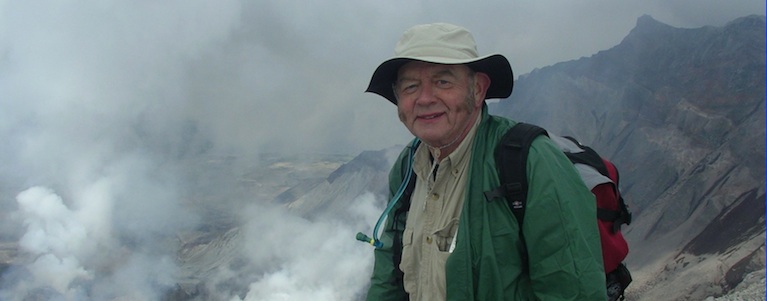Dave’s Briefs June 13, 2018: Student in Nationally Prominent Science, NASA Educational Programs for Students
By Dave Bunting, Shopper Editor
Chehalis High School Student Advances Diagnosis of Zika Virus
F. West Chehalis High School senior Ashlynn Gallagher won 1st place in the Intel South Sound Regional Science Fair among 300 students from 50 high schools. She advanced to the international fair in Pittsburgh for her project, a test strip that detects the Zika virus and delivers results in 2 min.
Her proposal was also named fourth best in the International Science and Engineering Fair sponsored by Intel.
Zika is the extremely dangerous and incurable mosquito-borne virus that causes few or no symptoms in infected people, but that, if it infects a pregnant woman, causes her baby to be borne with a very under-developed brain in an unusually small head.
She believes her test strip can be modified to detect other serious diseases such as Ebola, HIV or cancers.
Her efforts to find doctors and laboratories to test her strip were made more difficult because the doctors feared her contacting the virus could endanger her chance of bearing children herself.
She has also won an internship in this year’s summer school with Fondazione Bruno Kessler WebValley in Italy.
In the fall, she will enter Oregon State University to seek degrees in bioengineering and mathematics or computer science.
NASA Projects For High School Students
The Space Shuttle was a glider!
This week’s emphasis in one NASA program for students is gliders. NASA offers several activities this week for high school students on this week’s subject of gliders. Here’s one of them:
Energy Activity
If so instructed by your teacher, print out a worksheet page for these problems.
Background:
Potential energy is stored energy. The chemical energy in a can of gas, the energy in a compressed spring, and the energy in water behind a dam are all examples of potential energy. Potential energy is also called energy of position. In this case the formula for potential energy is: Ep= m*g*h where Ep stands for potential energy and is measured in joules, m stands for mass and is measured in kilograms, g stands for gravity and equals 9.8 m/s2, and h stands for height and is measured in meters.
Kinetic energy is energy of motion. The formula for kinetic energy is: Ek= 1/2*m*V2 where Ek stands for kinetic energy and is measured in joules, m stands for mass and is measured in kilograms, and V stands for velocity and is measured in m/s.
When a glider loses altitude it converts potential energy into kinetic energy. This is an example of the law of conservation of energy. When potential energy is converted into kinetic energy, the velocity of the plane or glider increases. The amount of increase can be calculated by solving for velocity in the kinetic energy equation given above.
Problems:
- A model glider has a mass of 1 kg. How much potential energy does it have 2 meters off the ground?
- The same model has a velocity of 2.2 m/s. How much kinetic energy does it have?
- If the same model descends 2 meters and all it’s potential energy is converted to kinetic energy, what is the glider’s change in velocity?
- A full-sized glider has a weight of 4,900 N, while it’s pilot has a weight of 825 N. If it is 1,000 meters off the ground, how much potential energy do the plane and pilot have?
- The same glider from Problem 4 has a velocity of 35 m/s. How much kinetic energy does it have?
- The same glider from Problem 4 has a velocity of 35 m/s. The glider descends 900 meters. What is it’s new velocity?
- Compare the velocity you calculated in Problem 6 to the speed of sound. Is this answer reasonable? Why or why not?
College students compete for NASA extracting water from Mars ice
In deep space, accessing water is a top priority for human survival. NASA is exploring ways to provide water using existing resources on multiple planetary surfaces and engaging universities in this mission through the RASC-AL (Revolutionary Aerospace Systems Concepts – Academic Linkages) Special Edition: Mars Ice Challenge.
The Mars Ice Challenge is one of several RASC-AL collegiate design competitions sponsored by NASA and administered by the National Institute of Aerospace in Hampton, Virginia, that exercise innovation in support of NASA’s vision for expanding human space exploration – in this case, a technology demonstration for critical in-situ resource utilization (ISRU) capabilities.
Teams and their advisors travelled from their universities and set up their drilling systems in the hangar at NASA’s Langley Research Center. Teams had a day to set up before the two-day competition began.
In its second year, Mars Ice Challenge judges 10 competitively selected teams to travel to NASA’s Langley Research Center from June 5-7 to demonstrate unique methods for harvesting water from simulated Martian subsurface ice. The goal? Extract as much water as possible over a two-day period.
This year, the team from Northeastern University placed first overall and collected the most water with its concept titled Planetary Articulating Water Extraction System. Northeastern University, with 18,000 students spread among four campuses, is a relatively small school in Massachusetts.
“The team is very excited, they all worked very hard,” said Dr. Taskin Padir, the team’s advisor. “One of the great things about this competition is that we were able to build on what we learned from the past year’s teams.”
Northeastern mechanical engineering student Emmy Kelly added the team is already thinking about what’s next.
“We were glad we performed so well but as soon as we got back to the hotel we started talking about next year,” she said. “We want to improve and make modifications so we can run more autonomously. We’re looking to be more Mars ready.”
For more about this project:
NASA has thousands of projects, competitions, and learning opportunities for students from K-8, high school, and college.
